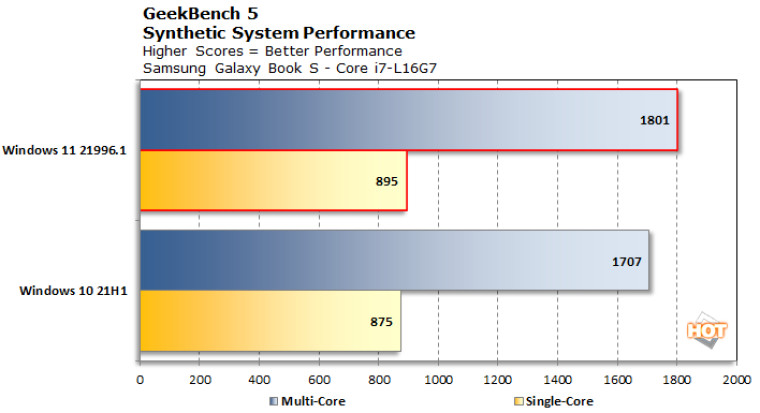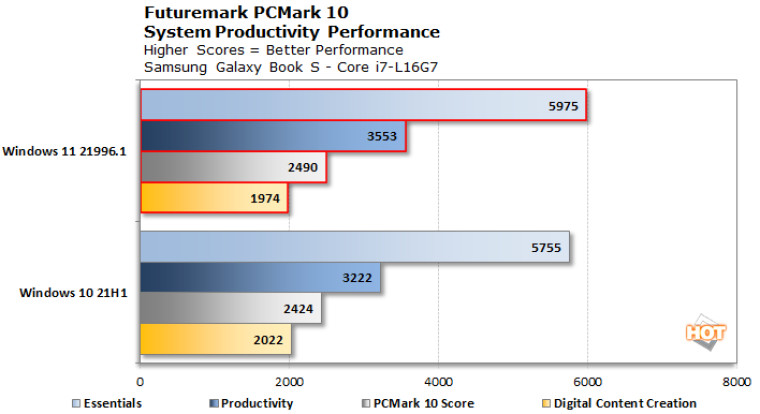
After the Windows 11 ISO for build 21996.1 leaked a few days back, we at Neowin, as well as other outlets, have been exploring our way around it to get a feel of the upcoming Windows OS. You can read about our first impressions of Windows 11 here. We also briefly looked at the Pro version which you can find here.
A new kind of testing however was carried out by Hot Hardware, curious to find the changes made, if any, to the Windows 11 scheduler and how well it would cope with the upcoming Big-Bigger Alder Lake CPUs from Intel. In fact, AMD's next-gen Ryzen processors are also expected to feature a hybrid big.LITTLE kind of architectural design.
For testing, the Samsung Galaxy Book S with the Lakefield Core i7-L16G7 has been used since Alder Lake isn't out yet. The aforementioned Windows 11 build 21996.1 was compared against the 21H1 update for Windows 10 to check for performance differences in the new OS.
The results indicate a definite improvement in performance depending on the workload. There appears to be a big improvement in browser performance:

Geekbench, which runs a variety of short burst tests, saw moderate gains in the multi-threaded (MT) test and even lower gains in the single-threaded (ST) one.

CInebench, which tests Cinema 4D rendering performance, saw modest gains when all cores were loaded fully, but the improvement was more pronounced in the ST load since the workload jumps around between cores and is more affected by the scheduler input.

A graphics workload was also tested in the form of the 3DMark Night Raid, which is a light DirectX 12 benchmark. This is the only test that saw performance regression in Windows 11.

Finally, PCMark 10 was run that tests both the CPU and GPU at the same time and is meant to simulate a real usage scenario of our PCs. The results for this were mixed as it tests a variety of different workload types.

Although these are very early days for Windows 11, and in fact, they are earlier than early to be fully honest, the results overall do look somewhat promising. In the coming days. with more available hardware and further updates, we may see more improvements still.
Source and images: Hot Hardware

















33 Comments - Add comment